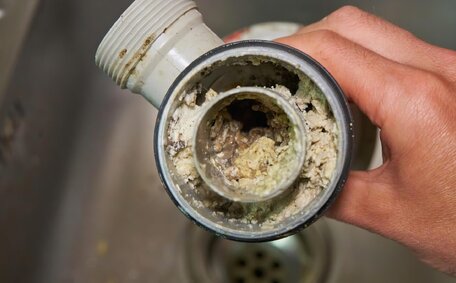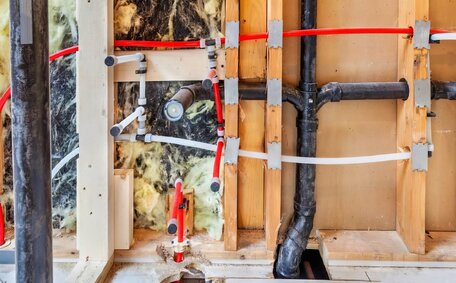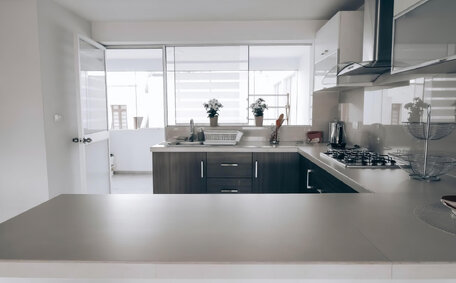Understanding Hot Water System Efficiency
A well-maintained storage water heater optimises energy use and can significantly reduce your household’s energy costs by approximately 25% in Australia.
An efficient hot water system provides sufficient hot water with minimal energy consumption. Well-tuned systems waste less standby energy while hot water can remain in the water tank. Optimised heat transfer also curtails heat loss during delivery, maintaining a return water temperature that exemplifies how systems can operate with high efficiency.
Boosting your hot water system’s efficiency includes insulating, adjusting temperature settings, installing water-saving fixtures, and routine maintenance such as sediment flushing. Upgrading older units can also reduce energy usage. However, setting temperatures incorrectly can lead to health risks and missed energy-saving opportunities.
How Insulation Improves Water Heater Performance
Insulation plays a key role in ensuring your household’s hot water needs are met by preventing heat loss from the tank and pipes, thus improving your system’s efficiency.
Lack of insulation leads to heat escaping from your tank, wasting energy. Well-insulated tanks and pipes reduce this loss, maintain temperatures longer, and lead to lower energy bills and faster reheating times.
Wrapping tank pipes in high-temperature insulation enhances hot water system efficiency. The storage water heater should also be fully insulated on all sides. Proper insulation installation, replacement, or repair in your home yields significant energy savings.
Ensuring proper insulation is one of the most cost effective and straightforward ways to optimise the performance of your hot water system. Consider inspecting your insulation and seek professional advice on Whether to upgrade if necessary during routine maintenance of the water system your household depends on.
Optimizing Temperature Settings
Optimising the temperature settings on various types hot water systems is crucial for their efficiency. The key is lowering the thermostat to the lowest temperature that still provides adequate hot water for your needs.
Lowering your system’s temperature by approximately 5°C can reduce energy costs by 10-15%, providing enough hot water without sacrificing comfort.
Here is how to optimise your hot water system’s temperature settings:
- First, find the access panel, which conceals the thermostat dial or control knob fully on your hot water unit.
- Starting with the current setting, turn the thermostat down by increments of 1°C at a time.
- After changing the setting, run hot water to test the temperature.
- Target a hot water temperature of 50-60°C from the taps, details on how to check this are provided below. Any too low risks Legionella bacteria growth.
- Settle on the temperature that gives adequate hot water flow for your shower and other household needs, see section below for safety testing details.
- Consider using low-flow shower heads and tap fixtures to further reduce hot water usage.
Review your energy bills after adjusting to ensure the new settings improve your system’s energy efficiency. Make small thermostat adjustments as necessary to strike the optimum balance for your household’s needs.
Installing Heat Traps and Anti-Convection Valves
Heat traps and anti-convection valves are simple but effective devices that supply hot water with minimal heat loss in natural gas systems. They work by stopping the water heating flow through unnecessary paths, preventing convection currents and water mixing back down into the cold inlet.
Installing heat traps and anti-convection valves correctly optimises efficiency by preventing cold water from cooling the hot water, thus maintaining a consistent supply.
Heat traps, such as top-entry risers, U-bends, and float valves, prevent hot water from cooling by maintaining it at the top of the outlet pipe. Similarly, anti-convection valves stop flow reversal, enhancing system efficiency.
Combined with insulation, optimised temperature settings, and regular flushing/maintenance, heat retention valves are an essential asset for your system’s efficiency, especially if there’s still no hot water after troubleshooting. Consult a licensed plumber to install heat-saving features, and if you have a no hot water issue or if temperatures remain unexpectedly high without improvement.
Flushing Out Sediment Buildup
Over time sediment can accumulate at the bottom of your electric hot water heater and gas hot water systems, negatively impacting efficiency. Regular flushing helps remove sediment, which can result in reduced efficiency, to optimise performance.
- In the event of a power outage, Deactivate the hot water unit at the circuit breaker and press the reset button on your device to cool completely if electric, allowing you to reset your system safely.
- Connect a hose to the tank’s drain valve and lead it outside to a safe drainage area.
- Open the drain valve and flush the water until clear, removing sediment such as sand, minerals, and corrosion.
- Let the tank drain into a bucket until the water runs clear, which may take from a few minutes to half an hour.
- Close the drain valve, remove the garden hose, wipe any drips.
- Refill the system by turning back on the low flow water supply for energy conservation.
- Restart the gas supply, ensure to relight pilot light following instructions, or turn power back on for your system. Allow water to reheat before use.
Flushing once a year removes sediment buildup, fulfilling the need hot water systems have for clean tanks to improve heating efficiency, often cutting energy bills. Should you be uncertain during maintenance, do not hesitate to call plumber for expert guidance.
Using Low-Flow Fixtures
Installing low-flow fixtures, like showerheads and tap aerators, can do much to reduce the amount of hot water used, optimising your water usage without compromising comfort or convenience.
Quality low-flow fixtures reduce hot water usage by mixing air into the stream, cutting flow rates by up to 60% while preserving water pressure. This approach helps reduce the volume more than the amount water heated, curtailing the use to two-thirds less for showering, positively affecting your energy bills and enhancing overall efficiency.
Low-flow showerheads reduce water flow to 6-9 litres per minute, compared to traditional 15 litres per minute showerheads, while tap aerators can minimise flow to 4 litres per minute or less.
Simple screw-on or plumber facilitated replacements for efficient water systems can be inexpensive yet yield excellent savings over time. Consult a plumber for best fixtures to suit your household needs if necessary.
Used alongside optimised temperatures and insulation methods, installing low-flow fixtures provides compound efficiency benefits - reducing water waste while also cutting electricity or gas usage heating less water volume.
Performing Regular Maintenance
Regular maintenance, including inspecting key components and clearing sediment, is essential for your hot water system’s efficiency and longevity.
Have your hot water systems serviced by a licensed plumber every 1-2 years. A licenced plumber will check and adjust elements like circulation pumps, the gas control valve, expansion tanks, and relief valve, heat exchangers and thermostats.
Replacing worn parts prevents failures that compromise energy efficiency. Removing sediment improves heating performance and reduces corrosion inside the tank.
Low-cost regular servicing reduces the risk of breakdowns, optimises energy efficient performance, and can add years to the usable life of your hot water system.
Avoiding Legionella Risks
Legionella bacteria can grow in water systems when temperatures drop below 60°C. At certain levels, Legionella causes Legionnaires’ disease – a severe form of pneumonia.
While lowering hot water system temperatures does save energy, it’s crucial to keep temperatures above 60°C to prevent Legionella from multiplying to dangerous levels.
To prevent health risks from bacteria growth and optimise efficiency:
- Set temperature thresholds no lower than 60°C.
- Maintain temperatures using well-insulated pipes and tanks.
- Install heat traps and anti-convection valves to better retain heat.
- Consider solar preheating to reduce heating requirements.
Consistent monitoring of temperatures is vital, and a plumber should conduct regular testing for Legionella. Contact your licensed plumber immediately if temperatures cannot be maintained above 60°C to explore alternatives.
Energy efficiency in electric water systems is important, but a safety switch and overall safety must come first. While slight temperature reductions are usually safe, confirm any changes work for your household’s needs.
Analyzing Energy Usage and Upgrade Options
Consider the age of your water heater and the typical lifespan of its model. Although still operational, older systems often run less efficiently, potentially leading to higher energy costs over time.
Upgrading to a newer, more advanced system like a heat pump water heater can dramatically improve efficiency:
- Heat pumps are more efficient, extracting ambient heat and reducing electrical energy needed to heat water by 60-70% versus conventional units.
- They minimise standby energy loss during storage, excelling in heating water compared to older-style electric resistive systems.
- Heat pumps have an operating life of 15-20 years, reducing running costs and offsetting higher upfront costs long-term.
Consult your plumber on whether heat pumps, solar, or condensing gas systems are suitable for your home. Consult a licenced plumber to review efficiency upgrade options best matched to your budget, usage and household size.
Leveraging Rebates and Incentive Programs
There are great rebates and incentive programmes available when upgrading your hot water system in Sydney and New South Wales.
The NSW government offers rebates of up to $1,000 for new energy-efficient electric heat pump or solar hot water system installations, with additional discounts available from approved suppliers.
The Australian government’s Clean Energy Regulator has a Small-scale Renewable Energy Scheme that assigns Small-scale Technology Certificates (STCs) based on the amount of renewable energy a hot water system will produce over its lifetime. These STCs can translate into significant point-of-sale and installation discounts for both gas and electric hot water systems.
If you’re facing issues like a lack of hot water, attempt to resolve minor problems or contact Peakhurst Plumbing at 1300 349 338 for expert guidance on maximising rebates and savings when upgrading your system. We’ll help you navigate available incentive programmes as authorised agents for major brands.
With appropriate rebates and professional plumbing assistance, investing in a modern, energy-efficient hot water system can be cost-effective, paying for itself with energy bill savings within a few years.






